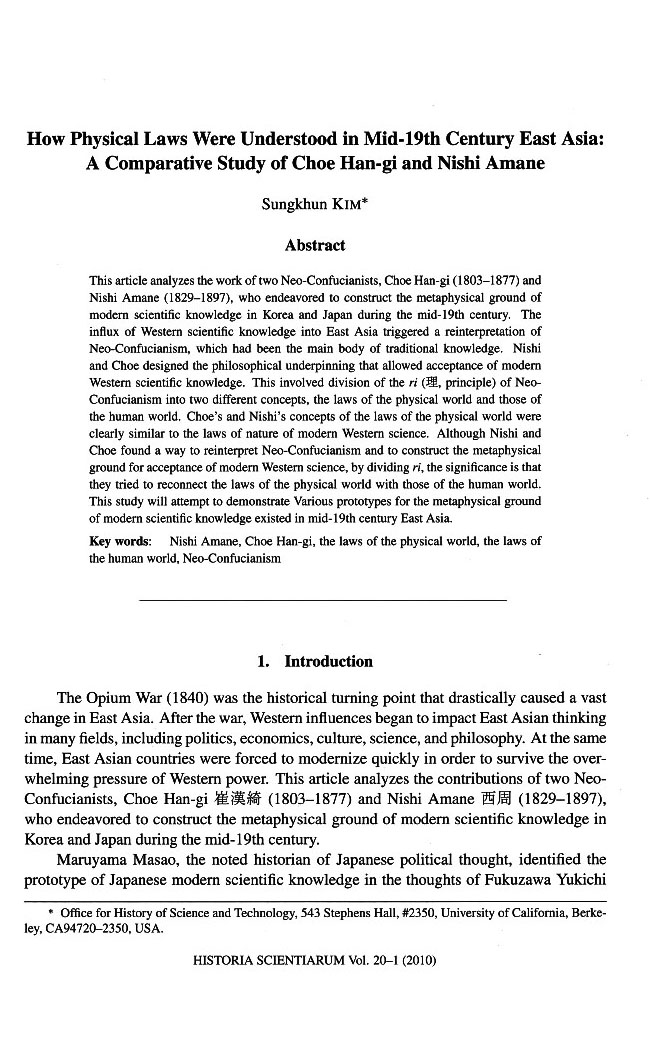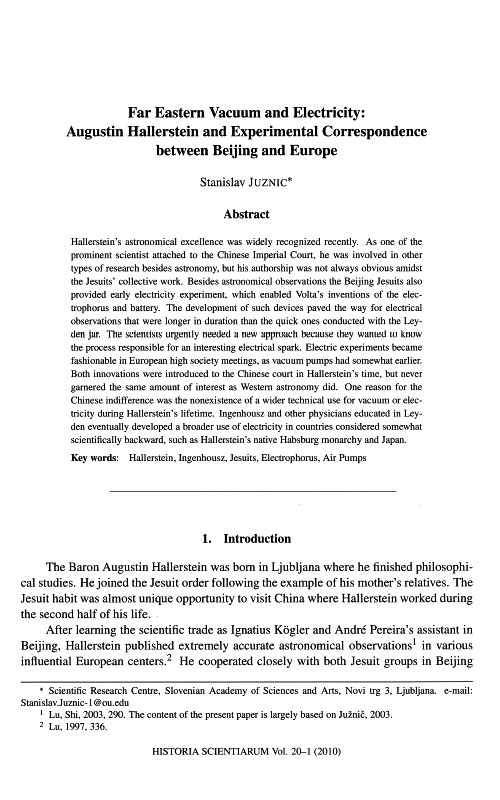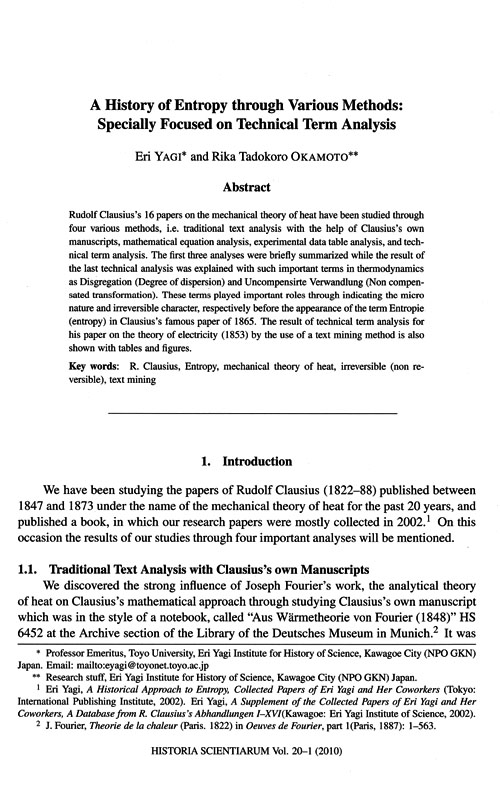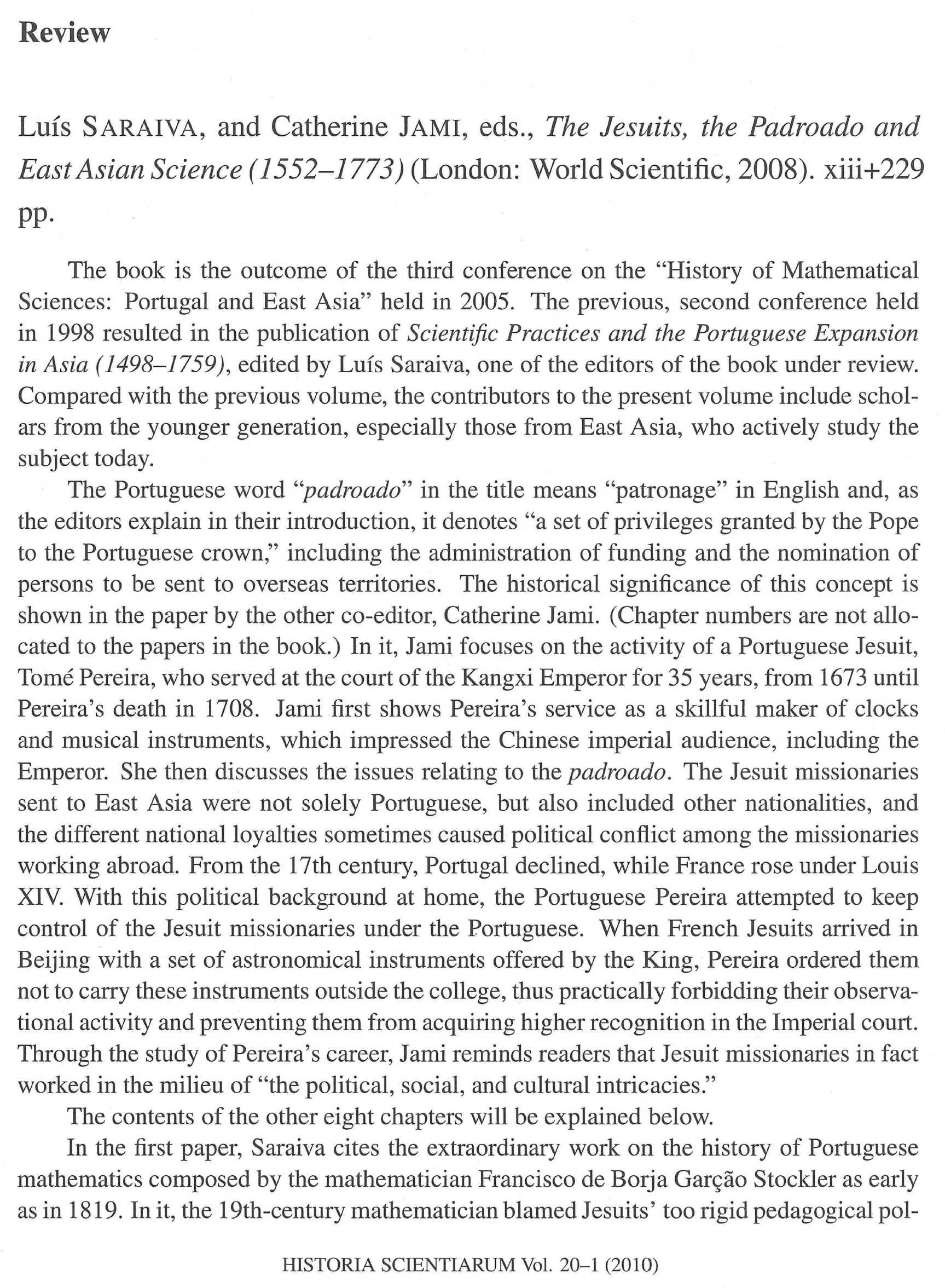 (Open Access) |
How Physical Laws Were Understood in Mid-19th Century East Asia : A Comparative Study of Choe Han-gi and Nishi Amane(pp.1-20) KIM,Sungkhun Office for History of Science and Technology, University of California, Berkley Abstract
This article analyzes the work of two Neo-Confucianists, Choe Han-gi (1803-1877) and Nishi Amane (1829-1897), who endeavored to construct the metaphysical ground of modern scientific knowledge in Korea and Japan during the mid-19th century. The influx of Western scientific knowledge into East Asia triggered a reinterpretation of Neo-Confucianism, which had been the main body of traditional knowledge. Nishi and Choe designed the philosophical underpinning that allowed acceptance of modern Western scientific knowledge. This involved division of the ri (理, principle) of Neo-Confucianism into two different concepts, the laws of the physical world and those of the human world. Choe’s and Nishi’s concepts of the laws of the physical world were clearly similar to the laws of nature of modern Western science. Although Nishi and Choe found a way to reinterpret Neo-Confucianism and to construct the metaphysical ground for acceptance of modern Western science, by dividing ri, the significance is that they tried to reconnect the laws of the physical world with those of the human world. This study will attempt to demonstrate Various prototypes for the metaphysical ground of modern scientific knowledge existed in mid-19th century East Asia.
Keywords |
 (Open Access) |
Far Eastern Vacuum and Electricity : Augustin Hallerstein and Experimental Correspondence between Beijing and Europe(pp.21-46) JUZNIC,Stanislav Scientific Research Centre, Slovenian Academy of Sciences and Arts Abstract
Hallerstein’s astronomical excellence was widely recognized recently. As one of the prominent scientist attached to the Chinese Imperial Court, he was involved in other types of research besides astronomy, but his authorship was not always obvious amidst the Jesuits’ collective work. Besides astronomical observations the Beijing Jesuits also provided early electricity experiment, which enabled Volta’s inventions of the electrophorus and battery. The development of such devices paved the way for electrical observations that were longer in duration than the quick ones conducted with the Leyden jar. The scientists urgently needed a new approach because they wanted to know the process responsible for an interesting electrical spark. Electric experiments became fashionable in European high society meetings, as vacuum pumps had somewhat earlier. Both innovations were introduced to the Chinese court in Hallerstein’s time, but never garnered the same amount of interest as Western astronomy did. One reason for the Chinese indifference was the nonexistence of a wider technical use for vacuum or electricity during Hallerstein’s lifetime. Ingenhousz and other physicians educated in Leyden eventually developed a broader use of electricity in countries considered somewhat scientifically backward, such as Hallerstein’s native Habsburg monarchy and Japan.
Keywords |
 (Open Access) |
A History of Entropy through Various Methods : Specially Focused on Technical Term Analysis(pp.47-56) YAGI,Eri* and OKAMOTO, Tadokoro Rika** * Toyo University:Eri Yagi Institute for History of Science ** Eri Yagi Institute for History of Science Abstract
Rudolf Clausius’s 16 papers on the mechanical theory of heat have been studied through four various methods, i.e. traditional text analysis with the help of Clausius’s own manuscripts, mathematical equation analysis, experimental data table analysis, and technical term analysis. The first three analyses were briefly summarized while the result of the last technical analysis was explained with such important terms in thermodynamics as Disgregation (Degree of dispersion) and Uncompensirte Verwandlung (Non compensated transformation). These terms played important roles through indicating the micro nature and irreversible character, respectively before the appearance of the term Entropie (entropy) in Clausius’s famous paper of 1865. The result of technical term analysis for his paper on the theory of electricity (1853) by the use of a text mining method is also shown with tables and figures.
Keywords |
